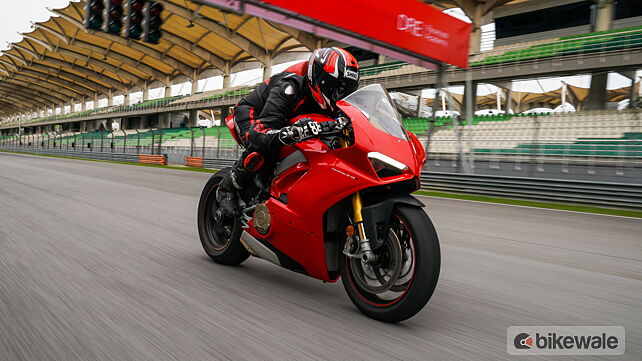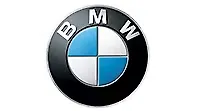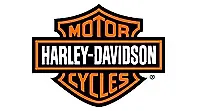Introduction

Welcome to Sepang. And welcome to our track ride review of what is a truly special motorcycle. This is the Ducati Panigale V4 S, and it is one of those rare two-wheeled machines that make you feel like you are a much better rider than you actually are! Yes, it's that good. But before we dig deeper, a bit of throwback first...
The first Panigale
It was 2012. The first-ever Panigale had only recently rolled out. And the fact that it had LED lamps, different riding modes, and near 200bhp was a huge deal at the time. It was also the first time I rode at the Sepang circuit in Malaysia. And I did it on that very Panigale.
That I was overwhelmed by all that, would be an understatement. The track was too technical; the bike was the most powerful I had ever ridden; and I was a nervous wreck. I was braking early, turning in too soon, and I was just refusing to whack open the throttle even on those two long straights that Sepang is known for.
It wasn't easy.
Snap back to the present, and I am still a nervous wreck, the Sepang is still as technical as ever, and I am about to ride the most powerful motorcycle I have ever ridden! Sometimes the more things change, the more they remain the same.
And things have changed
The Panigale V4 is still a red, gorgeous looking, piece of art. But under all that sculpted body work, is a suite of technologies that promise to take us to the moon and back.

Let's start with the engine. This, the Desmosedici Stradale, is Ducati's first four-cylinder engine used in a series production motorcycle. It displaces 1103cc, it is derived from the engine used in MotoGP, and it makes almost 215bhp of max power. It also revs higher, feels smoother, and is happier in the top range than the older 1299 V-Twin. But, it's not short on tractability either. The mid-range, for instance, was strong enough to pull me out of second gear hairpins while I was happily sitting in third without things feeling slow or bogged down. But no, the mid-range isn't as good as the V-Twin.
The chassis is new too. The engine remains the central part of the chassis as on the older bike. But the front frame is new. It is a cast aluminium unit and has some flex built into it. The swingarm is longer and the rear aluminium sub-frame is new as well. The result is a Panigale that has a more relaxed steering geometry, a longer wheelbase, and the promise of more stability over bumpy surfaces when leaned over thanks to the flex in the front frame. But, the V4's reactions haven't dulled as a result of these changes, which we will get to in a bit.
Now, while the regular V4 gets completely adjustable turn-screw suspension, the S version we rode, comes with electronically adjustable suspension. Not only do the Ohlins unit self-adjust according to the ride mode, these also alter their damping characteristics depending on the load. For instance, the front compression damping will harden under braking to prevent a dramatic dive, while its rebound damping will stiffen during quick direction changes to keep that floaty feel at bay.

As far as riding modes go, there are three - Street, Sport and Race. Each mode has its unique default setting for throttle response, traction, wheelie and slide control, engine braking, ABS sensitivity, and suspension setting. Now, the V4 sits right on top in the Ducati food chain, so electronic riding aids were a given. But, the new Panigale gets the most elaborate suite of rider aids I have ever used on a bike.
You still have traction control, anti-wheelie, cornering ABS, a quickshifter and engine brake control, as seen on the older 1299. But, each of these aids have been improved upon in terms of how they process data and then react, thus making things smoother, less intrusive and safer for the rider.

And, there's new stuff like Slide by Brake and Slide Control. While the latter helps you slide the bike on power exiting corners, Slide by Brake is in place to make you look cool under hard braking. It allows the rider to lock the rear tyre by getting it to step out of line - but not by much, thereby ensuring safety. It's like an amateur's version of backing-it-in, if you will. The IMU has also allowed Ducati to add lean sensitivity to the quickshifter, making it easier to go up and down the box mid corner without upsetting the bike too much.
There's a new TFT screen as well, and the user interface for it has changed too. It's now simpler to access riding modes and changing in-menu settings for traction, ABS, wheelie etc via the toggle switches on the left side switchgear. These settings can also be adjusted on the fly now.
What remains the same...
...is the exhilaration that probably defines every Panigale that Ducati rolls out. Only on the V4, it has been dialled up to 11. However, the Italians have also achieved something special with the bike; they have made it much-easier to exploit even by track noobs like me!
Instead of demanding commitment, focus and skill from the rider, all the V4 wants is to be pointed in the direction of intended travel and then its throttle be opened wide. The rest it manages. And it manages things so well, it fools you into believing that you, the rider, are the talented one here!

Coming down the main straight at Sepang, the bike hits 270kmph before the brakes are called in. And then, in 100 metres the V4 sheds 200kmph with the ease and poise that should win it a place in the top 10 most elegant things. There's no dramatic real wheel lift, no obvious interference from the ABS, and no loss in brake bite whatsoever. As for me, well I had to use all the strength in my arms and thighs just to stay on the bike. Yes, that's how powerful the brakes are, and how ferocious the deceleration is.
Now Sepang isn't the easiest to get your head around. BIC, for instance, is a lot friendlier in comparison. So, for the longest time, I couldn't figure if I was coming up to a fast, flowing corner, or a tightening one. Or, if the next corner was the one that needed to be apexed late, or if it was the double apexed sort. Needless to say, I was making a hash of the lines. And that's when the true charm of the V4 shined through.

You can carry hard braking into the apex knowing there's cornering ABS. You can lean - at slow speed or high - down to the footpegs knowing the Pirelli SuperCorsa V3s are race tyres in road guise. And, you can roll the throttle to the stops whenever, wherever, and however, knowing that anti-wheelie, traction control, slide control, and every other electronic aid on the planet will see you through your tomfoolery. Lest you forget, this is a bike that makes almost 215bhp, but it feels so manageable, so friendly, and so intuitive, you can't help grinning inside the helmet.
The Panigale V4 has that innate ability to make you happy.
And if you are more skilled, and appreciate motorcycle engineering and dynamics in its purest form, you will love the V4 even more. The feel from the front at turn-in and when leaned over is outstanding. There's nothing remotely vague about the bike's responses; it almost feels like an extension of you and something you can take for granted.

Furthermore, the V4's ability to change directions will have you confuse it with something much smaller and lighter. The lazier steering geometry, the added weight, and the longer dimensions, clearly have had no effect on the bike's dynamics. Plus, the precision of the controls - throttle, brakes and even the quickshifter - will get you riding the bike faster and more aggressively, but with a lot more confidence and ease.
Now, this is easy. Like we said, the V4 just makes you feel like a much better rider than you are, lifting your game like a performance enhancing drug.
Closing the loop

Unlike my last Sepang outing on the Panigale, this one was easy, fun and fast. The nervousness about handling a 200bhp machine around a track that I don't get, had disappeared within two laps. What's more, I don't remember the last time I rode this quick around corners without scaring myself. In fact, I don't remember the last time I had so much fun on a bike around a race track.
Sure, the V4 has its shortcomings. Once astride, it feels small and cramped. It doesn't sound very good. In fact, at full clip, it has more mechanical noise than a sound that will give you goosebumps. And, with its aggressive seating ergonomics, a heavy clutch pull and a hightail, it won't prove to be as friendly a bike in our cities as it does on the track.
But, none of it matters because the V4 more than makes up for all that lack of civility by being a tremendous supersport motorcycle. It is easily the best I have ridden. And I love it!
Gallery
1/16
Ducati Panigale V4 S Action
Double Tap to Zoom











































































































